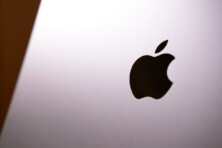GfK Consumer research indicates that 53% of respondents would like optimized energy usage

Study shows smart homes are not yet smart enough. Source: shutterstock.com
Today, a large number of devices bought for our homes feature ‘smart and connected’ functionalities. In Europe for example, about 26% of the €255 billion spent on Technical Consumer Goods this year will be for smart appliances like Visual cameras, Air treatment, TVs, Audio home systems, Robotic vacuum cleaners, Smart LEDs. GfK´s forecast indicates that the market for smart devices, excluding smartphones and smartwatches, will grow by an estimated 9% globally this year, up from €122 billion to €133 billion.
The technology in the homes has experienced an unprecedented rate of change over the past decades, and it is not over. Penetration of smart devices ranges in households. Smart TVs accounted in the first half of 2019 for 80% of TVs purchased in Germany, UK, France, Italy, and Spain, while Robot vacuum cleaners for about 12% or 4% in the case of Dishwashers.
While the promise of a smart home resonates well with consumers in general, the present reality is a collection of isolated smart devices in our homes. Despite a solid, 42% value growth for Smart Appliances, and a value growth of 25% for Smart Energy and Lighting in first half of this year, the largest smart category of Smart Entertainment & Connectivity accounted for €6.3 billion turnover, despite showing a 0% annual growth in the January to June 2019 period in the five European markets.
As the first mover wave starts to tail off, the industry is looking for ways to renew demand and elevate the smart home to the next level. First movers buy for very different reasons than the mass market with product coolness and trendiness both important ingredients. However, to take these smart solutions to the mass market, other benefits like simplification, must be added to the list of advantages that smart home brings to consumers.
GfK Consumer research indicates that 53% of respondents would like optimized energy usage, 48% say ‘yes’ to remote home monitoring, and 41% would prefer their home appliances to communicate with each other. That is the solid mandate consumers are giving to the industry and to retailers to make the smart home concept a reality.
Consumers are prepared to pay a premium for solutions that simplify their lives and cater for their needs. They expect that smart and connected solutions will turn their homes to a more secure, healthier, efficient and automated place. GfK Consumer Life research indicates that 24% of young family respondents like the idea of technology that ‘knows’ them and can make recommendations and take actions based on their preferences. That contrasts with 6% of older respondents who have perhaps a more cautious attitude towards technology. However, if their trust in technology and complexity concerns are addressed, silver surfers could also enjoy the Smart Health suite of solutions.
SEE ALSO: Top 5 NFC-enabled smartwatches









